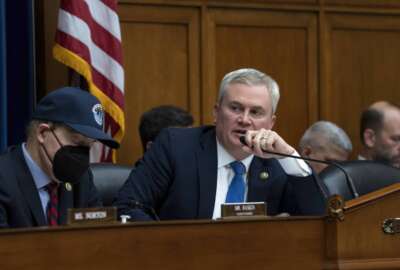
New telework plans require a huge bureaucratic lift
White House seeks refreshed policy for who works where, but makes if awfully complicated to carry out.
The telework versus back-to-the-office debate continues. In a memo from weeks ago, the White House ordered agency heads to update their “work environment” policies. Agencies must balance the new work gestalt with good performance. And do so in a way informed by data.
But: If a memo takes 19 pages of single spaced type to say something straightforward, you know you’re in trouble. Especially if the 19 pages are directed to your agency head, and you know you’ll actually have to do the work.
I’m referring, of course, to the April 13th memo from Office of Management and Budget Director Shalanda Young. More than 7,800 words strong, it details how to achieve the worthy goal of a plan for who should work where. The memo carries the subject, “Measuring, Monitoring, and Improving Organizational Health and Organizational Performance in the Context of Evolving Agency Work Environments.”
I think the basic idea here is, “What the heck are we doing about telework?”
OMB wants agencies to objectively measure their performance and health, then refresh their work environments to optimize the results. Given that before the pandemic a certain percentage of people teleworked, the memo presupposes that the now-higher levels of telework won’t return to their earlier levels.
The timing makes sense. The health emergency itself, getting green around the edges for some time now, soon will reach what the memo calls its “planned conclusion.” That’s a funny concept, to plan the conclusion of an emergency. But the memo recognizes that most people have moved past the sense of acute dread over COVID. So the return-to-the-office question stands there visibly, like a naked model in a drawing class.
True, too, cities coast-to-coast grapple with high office vacancy rates and their effects on city vitality. That puts some pressure on the federal government as tenant. OMB is caught between that pressure and the pressure from telework aficionados to stay home. Federal News Network’s poll of readers — of whom thousands responded — shows people have the sense they might get pushed back to the office.
This latest guidance looks like both a way to navigate this by avoiding governmentwide policy and putting the burden on agencies to individually figure it out. The elaborate guidance gives resulting plans an imprimatur of scientific, data-driven methodology.
But golly nibs, the memo takes readers into a heavy thicket of management jargon; cross-referenced policies, documents and statutes; academic-sounding lecturing; and even tautology.
For example: “Agencies’ organizational health and organizational performance frameworks and approaches must support delivery of the agency’s statutory missions. This concept is supported by academic, nonprofit, and private-sector literature.” Well yeah, if you make castings you don’t build a forge. And you want to turn out wrought metal, you don’t build a foundry.
This memo’s a doozy, even by government standards. I mean, there must be a ChatGPT way to say all this more simply. Maybe this was a ChatGPT piece.
You’ll find SWOT, PESTEL and FAST analyses all drawing in officers of human capital, data, evaluation, finance, information, experience, technology, acquisition and statistics.
I had trouble seeing the difference between the definitions of organizational health and organizational performance.
Health: “…an organization’s ability to drive performance results collectively in support of its mission…”
Performance: “…an organization’s effectiveness in delivering mission-aligned results.”
Beyond the recitation of dozens of possible measures, approaches and frameworks, the memo presents some hard deadlines. By mid-May, agency heads must designate someone to figure out how to measure performance and health. They must issue updated headquarters work environment plans that include telework policies. By mid June, OMB wants new plans from the agencies the White House designated as High Impact Services Providers — IRS, Veterans Affairs, Social Security, and other places like that with big retail government operations.
Other stuff is due 90 days out, 150 days out, and “ongoing.”
With instructions so convoluted, OMB runs the risk that plan preparers will match the statistics to back into the policies they want in the first place.
Telework drags along some politics. My sense is the average citizen doesn’t care whether an IRS employees is at home or in an office. Call center technology long ago gained the capability of serving virtual call centers. A phone is a phone, a screen of data is a screen. But then there’s the look of civil servants at home, whipping up smoothies while other people are stuck on crowded roads.
What about potential resentment of teleworkers by those whose jobs are necessarily on location? In an interview, Marcus Hill, the president of the Senior Executives Association and a former law enforcement training executive, said he doubts that’s the case.
OMB is correct that agencies must have workforce policies that get the work done right, treat employees fairly, and ensure the government is an attractive prospective employer. And pay at least some attention to the cities in which large numbers of feds work.
But does it have to be such a monumentally complex exercise?
Copyright © 2025 Federal News Network. All rights reserved. This website is not intended for users located within the European Economic Area.
Tom Temin is host of the Federal Drive and has been providing insight on federal technology and management issues for more than 30 years.
Follow @tteminWFED






